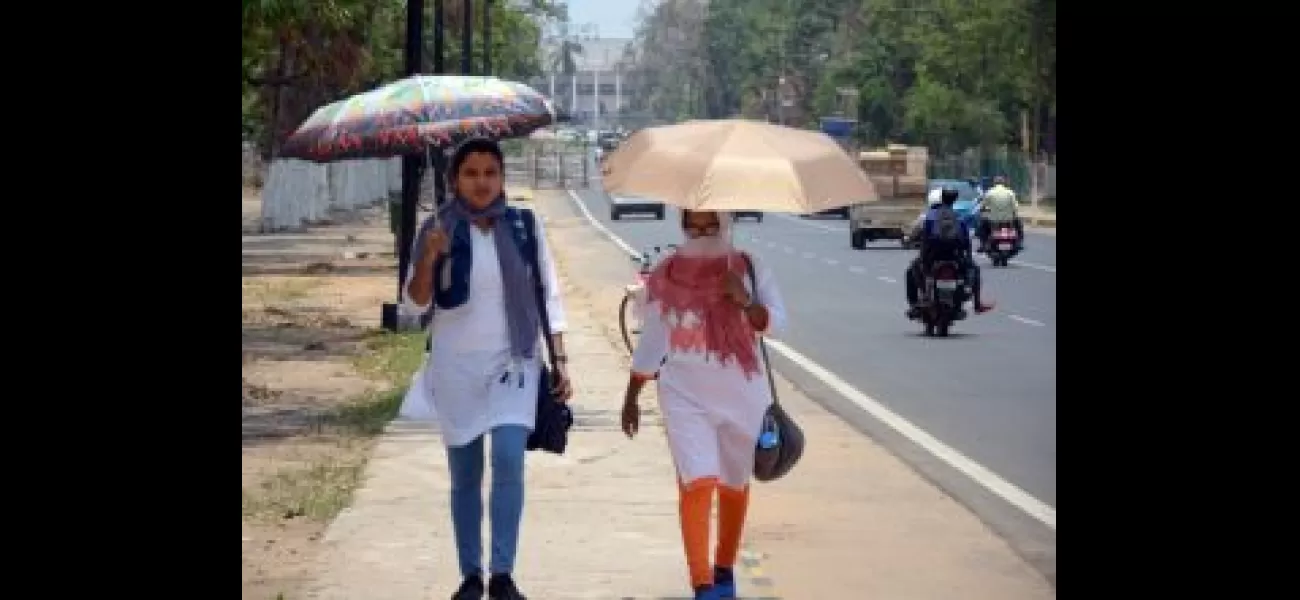Hot weather will soon be felt in northwest and east India again, as a heatwave is expected to hit the region.
NW & E India to face more extreme heat in coming days, with temps expected to increase by 2-3 degrees, according to India Meteorological Dept.
June 10th 2024.

New Delhi: According to the India Meteorological Department, the northwest and east regions of India can expect a significant rise in temperatures over the next five days. This news comes after a series of intense heatwaves in April and May, which not only tested the endurance of the people but also the country's disaster preparedness. Several states, including Uttar Pradesh, Bihar, and Odisha, reported deaths due to the extreme heat.
The IMD released a statement saying that the coming days could see heatwave to severe heatwave conditions in parts of Jammu and Kashmir, Himachal Pradesh, Uttarakhand, Punjab, Haryana, Delhi, Rajasthan, Madhya Pradesh, Jharkhand, Odisha, and Gangetic West Bengal. Experts attribute the intense heat to the El Nino phenomenon, which causes unusual warming of the ocean surface in the central and eastern tropical Pacific Ocean. The increasing concentration of greenhouse gases in the atmosphere is also a contributing factor.
The impact of the heatwave is not limited to just the rise in temperatures. Studies have shown that rapid urbanization has worsened the situation, with outdoor workers and low-income households bearing the brunt of it. In May, many places in India recorded all-time high temperatures, with some even reaching 50 degrees Celsius. It has also been observed that heatwaves are now occurring more frequently, with a higher likelihood of them happening every 30 years.
The recent heatwaves have raised concerns about its impact on the general elections in India, which took place in April and May. Many believe that the heat may have played a role in the lower-than-usual voter turnout. Moreover, the intense heat has also taken a toll on water availability and agriculture, with water storage in major reservoirs dropping to just 22% of their live storage. This has not only affected the daily lives of people but also power generation, with the demand for electricity reaching a record high.
The health ministry has reported a staggering number of heat stroke cases and deaths in the past few months. From March to May, there have been nearly 25,000 suspected cases and 56 deaths due to heat-related illnesses. The National Centre for Disease Control also recorded 46 deaths in May alone, with over 19,000 suspected cases reported in the country. However, officials believe that the actual numbers could be much higher, as the data does not include deaths from some states and could be just the tip of the iceberg.
The severe heat waves have taken a toll on the economy as well. The World Bank predicts that India could face 34 million job losses by 2030 due to heat stress-associated productivity decline. Additionally, the country also faces food losses worth $13 billion annually, with only a small percentage of fresh produce having proper cold chain facilities.
In conclusion, the intense heat in India has become a major concern, affecting various aspects of society, including health, water availability, agriculture, power generation, and the economy. It is crucial for the government and individuals to take necessary measures to combat the effects of the heat and mitigate its impact.
The IMD released a statement saying that the coming days could see heatwave to severe heatwave conditions in parts of Jammu and Kashmir, Himachal Pradesh, Uttarakhand, Punjab, Haryana, Delhi, Rajasthan, Madhya Pradesh, Jharkhand, Odisha, and Gangetic West Bengal. Experts attribute the intense heat to the El Nino phenomenon, which causes unusual warming of the ocean surface in the central and eastern tropical Pacific Ocean. The increasing concentration of greenhouse gases in the atmosphere is also a contributing factor.
The impact of the heatwave is not limited to just the rise in temperatures. Studies have shown that rapid urbanization has worsened the situation, with outdoor workers and low-income households bearing the brunt of it. In May, many places in India recorded all-time high temperatures, with some even reaching 50 degrees Celsius. It has also been observed that heatwaves are now occurring more frequently, with a higher likelihood of them happening every 30 years.
The recent heatwaves have raised concerns about its impact on the general elections in India, which took place in April and May. Many believe that the heat may have played a role in the lower-than-usual voter turnout. Moreover, the intense heat has also taken a toll on water availability and agriculture, with water storage in major reservoirs dropping to just 22% of their live storage. This has not only affected the daily lives of people but also power generation, with the demand for electricity reaching a record high.
The health ministry has reported a staggering number of heat stroke cases and deaths in the past few months. From March to May, there have been nearly 25,000 suspected cases and 56 deaths due to heat-related illnesses. The National Centre for Disease Control also recorded 46 deaths in May alone, with over 19,000 suspected cases reported in the country. However, officials believe that the actual numbers could be much higher, as the data does not include deaths from some states and could be just the tip of the iceberg.
The severe heat waves have taken a toll on the economy as well. The World Bank predicts that India could face 34 million job losses by 2030 due to heat stress-associated productivity decline. Additionally, the country also faces food losses worth $13 billion annually, with only a small percentage of fresh produce having proper cold chain facilities.
In conclusion, the intense heat in India has become a major concern, affecting various aspects of society, including health, water availability, agriculture, power generation, and the economy. It is crucial for the government and individuals to take necessary measures to combat the effects of the heat and mitigate its impact.
[This article has been trending online recently and has been generated with AI. Your feed is customized.]
[Generative AI is experimental.]
0
0
Submit Comment





